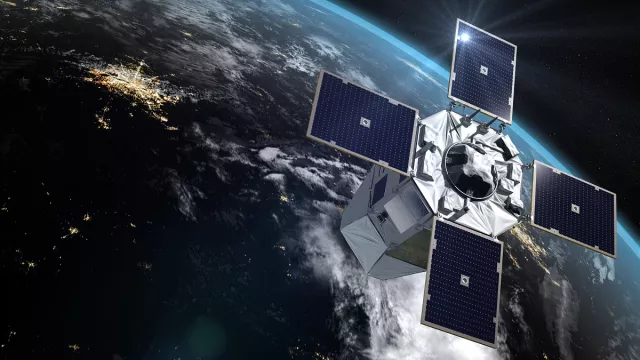The CSO satellites (for Composante Spatiale Optique) of the MUSIS programme (Multinational Space-based Imaging System) are reconnaissance sensors for the French military forces and their partners. They are succeeding the Helios 2 system that has reached the end of its operational life, substantially strengthening armed forces’ capabilities.
Key information
| Mission | Military Earth imaging |
|---|---|
| Domain | Defence |
| First launch | CSO-1 on 19 December 2018 |
| Partners | DGA (French defence procurement agency), system owner |
| Where | Phased sun-synchronous low-Earth orbit |
| Lifetime | 10 years |
Key figures
- System composed of 3 satellites
- 3,500 kg: mass of each satellite
Key milestones
- 6 March 2025: Launch of CSO-3
- 29 December 2020: Launch of CSO-2
- 19 December 2018: Launch of CSO-1
- March 2015: Agreement with Germany and Sweden for a third satellite
- 2010: MUSIS programme initiated by France
Project in brief
The CSO system comprises three optical polar-orbiting satellites at different altitudes to fulfil a dual mission: a ‘reconnaissance’ mission at 800 km geared towards providing coverage, acquisition over theatres of operations and revisit capability; and an ‘identification’ mission at 480 km to supply imagery at the highest possible level of resolution, quality and analytical precision.
The CSO satellites’ payloads will enable day/night acquisition of very-high-resolution visible and infrared imagery with a range of viewing modes tailored to a broad range of requirements. All three satellites are highly manoeuvrable and built around the same bus architecture that draws partly on the heritage of Pleiades, affording great autonomy and agility despite a mass of 3.5 tonnes. The satellites will keep station thanks to their unique autonomous orbit control capability.
The overall system is designed—mission operations timing and a ground station network with a dedicated polar station—to assure fast turnaround between tasking requests and acquisition of intelligence combined with rapid delivery of data to the point of need.
Airbus Defence & Space France is responsible for designing and building the satellites, assembled at its Toulouse facility, while Thales Alenia Space is supplying the optical instrument. Airbus Defence & Space France is also prime contractor for the user ground segment, under contract to DGA. Development of the mission ground segment and the mission programming and image processing workflows involves a number of industry firms including Thales Services, Cap Gemini and CS-SI.
CNES’s role
The French defence procurement agency DGA has delegated oversight of the satellites and mission ground segment to CNES, which is also co-system architect and in charge of satellite launch, in-orbit checkout and stationkeeping.


